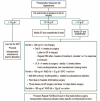Patient Blood Management in Hip Replacement Arthroplasty
- PMID: 27536627
- PMCID: PMC4972790
- DOI: 10.5371/hp.2015.27.4.201
Patient Blood Management in Hip Replacement Arthroplasty
Abstract
Perioperative blood transfusions are common in total hip arthroplasty because of preoperative anemia and perioperative blood loss. Perioperative anemia and the need for allogeneic blood transfusion are related with increased morbidity. To reduce perioperative allogeneic blood transfusion, keeping the preoperative hemoglobin level above 12.0 g/dL is important in orthopedic patients. By using the anti-fibrinolytic agent or perioperative cell salvage, reduce intraoperative blood loss is very important for the reduction of perioperative blood loss. As a transfusion trigger, low hemoglobin is another important target to reduce the transfusion rate. Because blood management is closely connected with prognosis, it has become a new challenge in orthopedic surgery.
Keywords: Allogenic transfusion; Blood management; Total hip arthroplasty.
Figures


References
-
- Sehat KR, Evans RL, Newman JH. Hidden blood loss following hip and knee arthroplasty. Correct management of blood loss should take hidden loss into account. J Bone Joint Surg Br. 2004;86:561–565. - PubMed
-
- Browne JA, Adib F, Brown TE, Novicoff WM. Transfusion rates are increasing following total hip arthroplasty: risk factors and outcomes. J Arthroplasty. 2013;28(8 Suppl):34–37. - PubMed
-
- Shander A, Knight K, Thurer R, Adamson J, Spence R. Prevalence and outcomes of anemia in surgery: a systematic review of the literature. Am J Med. 2004;116(Suppl 7A):58S–69S. - PubMed
-
- Karkouti K, Wijeysundera DN, Beattie WS Reducing Bleeding in Cardiac Surgery (RBC) Investigators. Risk associated with preoperative anemia in cardiac surgery: a multicenter cohort study. Circulation. 2008;117:478–484. - PubMed
-
- Beattie WS, Karkouti K, Wijeysundera DN, Tait G. Risk associated with preoperative anemia in noncardiac surgery: a single-center cohort study. Anesthesiology. 2009;110:574–581. - PubMed
Publication types
LinkOut - more resources
Full Text Sources
Other Literature Sources
Research Materials

